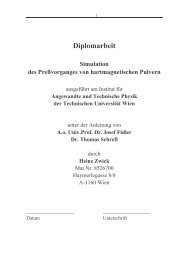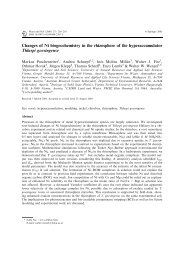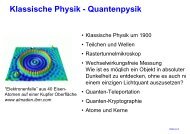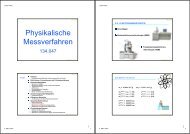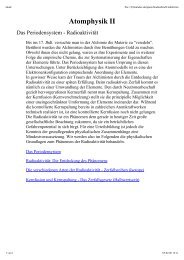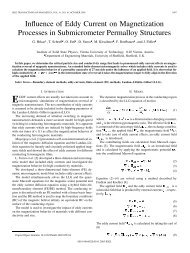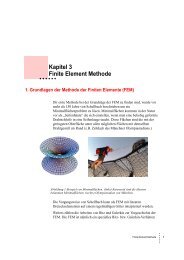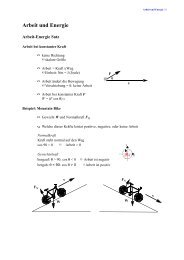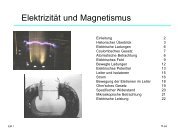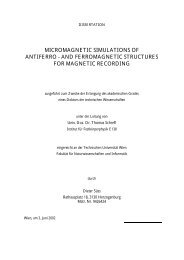Read Back Signals in Magnetic Recording - Research Group Fidler
Read Back Signals in Magnetic Recording - Research Group Fidler
Read Back Signals in Magnetic Recording - Research Group Fidler
Create successful ePaper yourself
Turn your PDF publications into a flip-book with our unique Google optimized e-Paper software.
FEM Simulations<br />
6 FEM SimulationsEquation Section (Next)<br />
6.1 Model<br />
The model of the read head used <strong>in</strong> the follow<strong>in</strong>g calculations is very simplified, because of a<br />
shortage of detailed <strong>in</strong>formation. Despite cooperation with hard disk manufacturers, their<br />
<strong>in</strong>formation was very restricted. Nevertheless we were able to simulate the qualitative<br />
behavior and to prove the functionality of our code. The whole read head model is separated<br />
<strong>in</strong>to two parts: A conductor model and a magnetic model.<br />
6.1.1 <strong>Magnetic</strong> Model<br />
A simple GMR read head basically exists of five parts, which def<strong>in</strong>e the magnetic behavior:<br />
The free layer, the p<strong>in</strong>ned layer, the hard bias, the shields, and f<strong>in</strong>ally the antiferromagnet for<br />
fix<strong>in</strong>g the p<strong>in</strong>ned layer. The magnetic net moment of an antiferromagnetic material is zero.<br />
Apart from exchange coupl<strong>in</strong>g the antiferromagnet does not contribute to the magnetic<br />
behavior. Therefore the antiferromagnetic part can be neglected, if the exchange coupl<strong>in</strong>g is<br />
taken <strong>in</strong>to account by add<strong>in</strong>g the exchange bias field to the effective field with<strong>in</strong> the p<strong>in</strong>ned<br />
layer.<br />
The geometry of the FEM model for the calculations is shown <strong>in</strong> Figure 6.1. The free layer<br />
and the p<strong>in</strong>ned layer dimensions are h GMR = 80 nm <strong>in</strong> height and w GMR = 100 nm <strong>in</strong> lateral<br />
FL<br />
PL<br />
direction. Their thicknesses are t = 5 nm and t = 2 nm , and their spontaneous<br />
FL<br />
polarizations are J = 1.2 T , which is the average of a composite free layer (NiFe/CoFe) and<br />
s<br />
J = 1.885 T (CoFe) respectively. Both layers are assumed to have no anisotropy and are<br />
PL<br />
s<br />
Cu<br />
separated from each other by a t = 2.7 nm th<strong>in</strong> nonmagnetic Cu layer. The two hard bias<br />
magnets have uniaxial anisotropy <strong>in</strong> lateral direction<br />
HB<br />
5 3<br />
K 1 = 2.5⋅ 10 J/m and a spontaneous<br />
HB<br />
polarization of J = 1T.<br />
Their lateral distance from the GMR layer structure is 10 nm. The<br />
s<br />
exchange bias field is always set to H ex = 0.05 T , unless otherwise noted. This corresponds<br />
65



